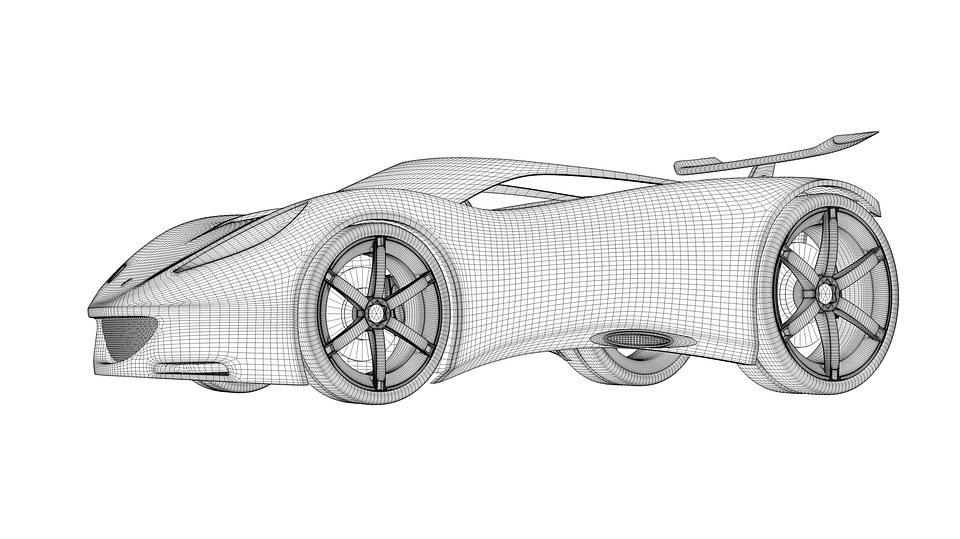The launch of any product requires a lot of backend work which includes conceptualization, design, modeling, engineering, user experience (UX) understanding, and market data analytics and this might not be readily seen by the end-user of the product. These parameters are the foundations of any product. These are some of the essential parameters which play a significant role in the success of any product in the market. UX is something that cannot be compromised as end-user interaction with the product and its features have a significant factor in making decisions about a good or bad product. Now the question how can a designer address this challenge in the initial phase of development itself? UX-aligned design methodology from starting of product development gives lots of iterations to designers to meet the requirements of the end-user in the best possible way. However, with prototype development services, A designer sees the product in real-time and thus can have initial interactions and workflows with the product, long before a user does and can make necessary changes to it.
UX can be seen in any domain of new product consulting which includes hardware and software design in many areas which can be mechanical, automobiles, mobiles, and media devices, website developments, gaming applications, consumer goods, machinery, production and assembly lines, aerospace, off-road applications and many more. A product being software or hardware in nature, UX needs to be taken care of accordingly and should be well analyzed and assessed before we launch it into the market. UX has become critical for any product and drives the business for any product company. Let’s consider some of the scenarios where UX importance can be seen and how it can be taken during the product design prototype stage itself to make the most out of the product development engineering phase.
In the automotive world, there is stiff competition with numerous no.s of manufacturers in line and are trying to acquire customers by introducing a lot of features in cars through the growing technology of electronics. In automotive design, a team of designers works on computer models, scaled or full version physical prototypes to experience user in-cabin comfort which includes HVAC (Heating, ventilation, air conditioning), seats with driver and passenger posture, interaction with interior trim plastic, and fabric, driver and passenger ergonomics, panel and steering mounted controls, interaction with acceleration and brake pedals, the effort of driver to operate vehicle functionalities, etc. Vehicle exterior interactions include door and boot space access, spare wheel tire access, headlamp design and styling, body-color with styling, etc. Unlike the software industry, UX in mechanical design firm does changes like automotive manufacturer keeps on launching variants of base mode but are way lesser than updates we receive in software applications. An OEM studies UX and many more user experiences extensively in software level prototypes first and then on actual physical product prototypes which gives them the best judgment of UX. OEM’s also leverage prototype design companies to accelerate the product development phase.
We see numerous cell phone launches in and around us with lots of attractive features like camera, operating systems functionalities, slim design, full screens, sound systems, and many more to count on. If we notice that all these things are basically linked to UX and to be competitive, the company needs to make sure that these are taken care of with utmost importance.
In the cell phone industry, the design of hardware and software applications is entirely based on understanding UX as this product is entirely associated with the user’s life and daily interactions are significant. From the hardware side, a designer tries to put the fingerprint sensors, volume, and power buttons in the most accessible and convenient locations, the styling of the phone and screen size are also critical in UX, operating system functionalities, and many more such things are looked upon to enhance UX for a cell phone user. All app developers work a lot on creating the best possible UX and even after the launch of the app, UX keeps on getting updated based on feedback and also to keep the user experience new with the addition of new features to keep the usage of the app grow. Cell phone app developers also use a lot of prototyping tools that depend on functionalities to be included. Axure is one such tool that allows prototyping with micro-interactions and defining workflows/ page flows in an efficient manner. A framer is another such tool used to develop prototypes during the development phase. There are many more such tools available to make a designer’s life easy and product launches can be done with a lot of confidence and understanding. Even designers of a product company, can take support from app design, and development service companies at the prototype stage and also in making changes or alterations based on feedback received after launch.
The above given are some examples and they can be related to any product industry and gives a lot of scopes for UX designers to iterate designs at the prototype stage to meet the UX requirements.

